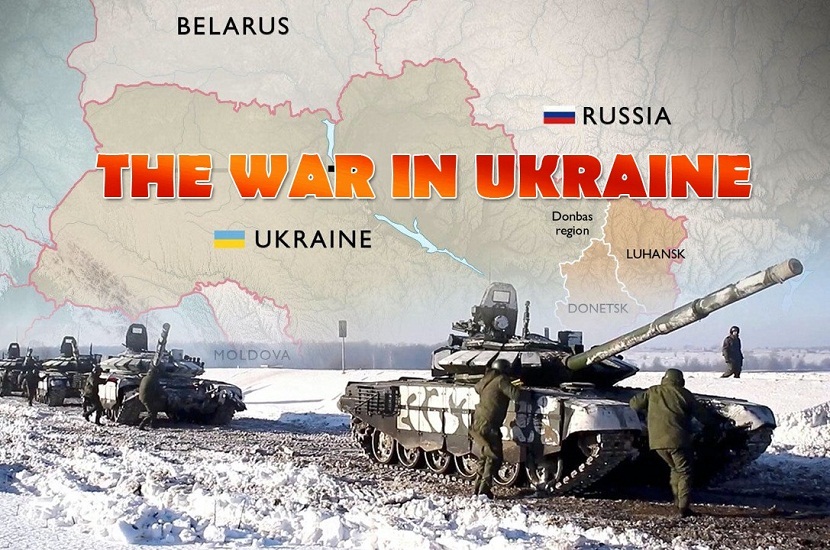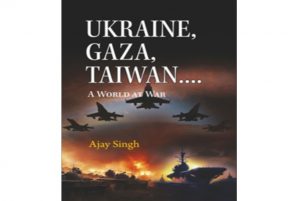The War in Ukraine – The Complete Story

Col Ajay Singh (Retd)
Pune, 6th July 2022: The Ukraine War has gone on for over four months now. At 5 in the morning of 24 Feb. Russian tanks and troops moved out of their concentration areas and advanced into Ukraine. The invasion of Ukraine had begun.
The heart of the dispute lies in Ukraine’s decision to join NATO. If Ukraine joined NATO, it would bring its troops right to Russia’s borders. Its missiles could hit Moscow in just 3 – 4 minutes. Rightly, it was a threat to Russian security, but warnings to Ukraine were disregarded.
Talks failed and the tensions intensified. On 21 Feb, Russia recognized the Provinces of Luhansk and Donetsk in the Donbas as ‘independent’ states and on 24 Feb, Putin announced the ‘Special Military Operations’ against the ‘neo-Nazis of the Ukrainian government.’
Russian troops advanced into Ukraine in three broad thrusts. From the South, they moved out of Crimea and fanned out all along the coast. An Eastern thrust line moved towards Kharkiv, headed for the line of the Dnieper River with a complementary thrust advanced from Donbas in the South East. But the major thrust came from the North and North East, which advanced toward Kyiv. Russian tanks and troops moved in along a 1400-kilometer-long front, and in the first few days made good progress. It was felt that Ukraine would collapse in a week or so – a fortnight as best. But the Ukrainians held on with remarkable spirit and determination, fighting delaying battles along each thrust. And it was in the capital Kyiv, that the most decisive battle of the war took place.
The Battle of Kyiv
At 8 in the morning of 24 Feb 14 Russians MI 8s helicopters, escorted by Alligator gunships swooped over Antonov airfield at Hostomel – the crucial airfield 30 kms North west of Kyiv. Three were shot down, but the others landed. Russian paratroopers and commandoes jumped off to seize the airfield – then held only by members of the National Guard. But the Ukrainians reacted fast and regained control of the airport and its vital runway.
Meanwhile a 64 km long column of tanks and troops from the 29th, 35th and 36th Combined Arms Armies raced down the M 01 highway from Belarus to Kyiv. But inexplicably the column stopped when it was short of Kyiv and halted for 4 – 5 days. That gave Kyiv time to prepare their defences, and eventually the Russians did not attack but withdrew to focus on the Donbas.
Actions in the Eastern and Southern Front
Along with the assault on Kyiv, the Russians attacked simultaneously in the South and East. In the East, they advanced towards Kharkiv, Ukraine’s second-largest city, just 30 kms from the border. On 27 Feb, Russian tanks entered the town but were pushed back. Repeated attacks – including a paradrop operation failed. Cut off and isolated, Kharkiv held on for three months and in the end of May, the Ukrainians launched a counterattack that recaptured the lost area and forced the Russians back across the border.
In the South, Russia’s 58th and 8th CAA used Crimea as a launch pad and from there, moved Northwards and fanned out along the coastline. It captured the ports of Kherson, Mykolaiv, Melitopol and Mariupol. The major target was the port town of Mariupol. The port city held on for 82 days; fighting back air, naval and ground assaults in the bitterest fighting of the war till they finally surrendered on17 May.
The Battle of Donbas
13. As the second phase of operations began around mid-April, the focus shifted towards the Luhansk and Donetsk Provinces of the Donbas. On 18 April, Russian artillery attacked all along the Line of Contact and advanced along the 400-kilometer-long frontage, creeping forward just 3-4 kms a day. One by one, the major towns of Ilzium, Popasna, Kremina and others came under Russian control. The major fighting took place in the town of Sevierodonesk, whose capture in mid-June gave the Russians control over all of Luhansk.
The End State
14. After four months of fighting, Russian gains are considerable. They have taken over an area almost 200 kms deep along a 1000 km long front, right from Kharkiv in the North to the Black Sea coast. A fifth of Ukraine is in their hands – which includes its richest industrial and agricultural areas – areas which Russia states that it will keep.
And how could the war end? Putin could call it off after he secures the Donbas. Or he could go further westwards towards the prized port of Odessa and from there move on to Moldova. But, it won’t be easy for either side, and the war could go on for many months. It could become a ‘frozen conflict’ that simmers indefinitely. And even if Russia gets its victory, it could have the same effect that the ill-fated invasion of Afghanistan had on the Soviet Union. Rather than enhance Russia, it could diminish it and set the tone for its eventual decline.








